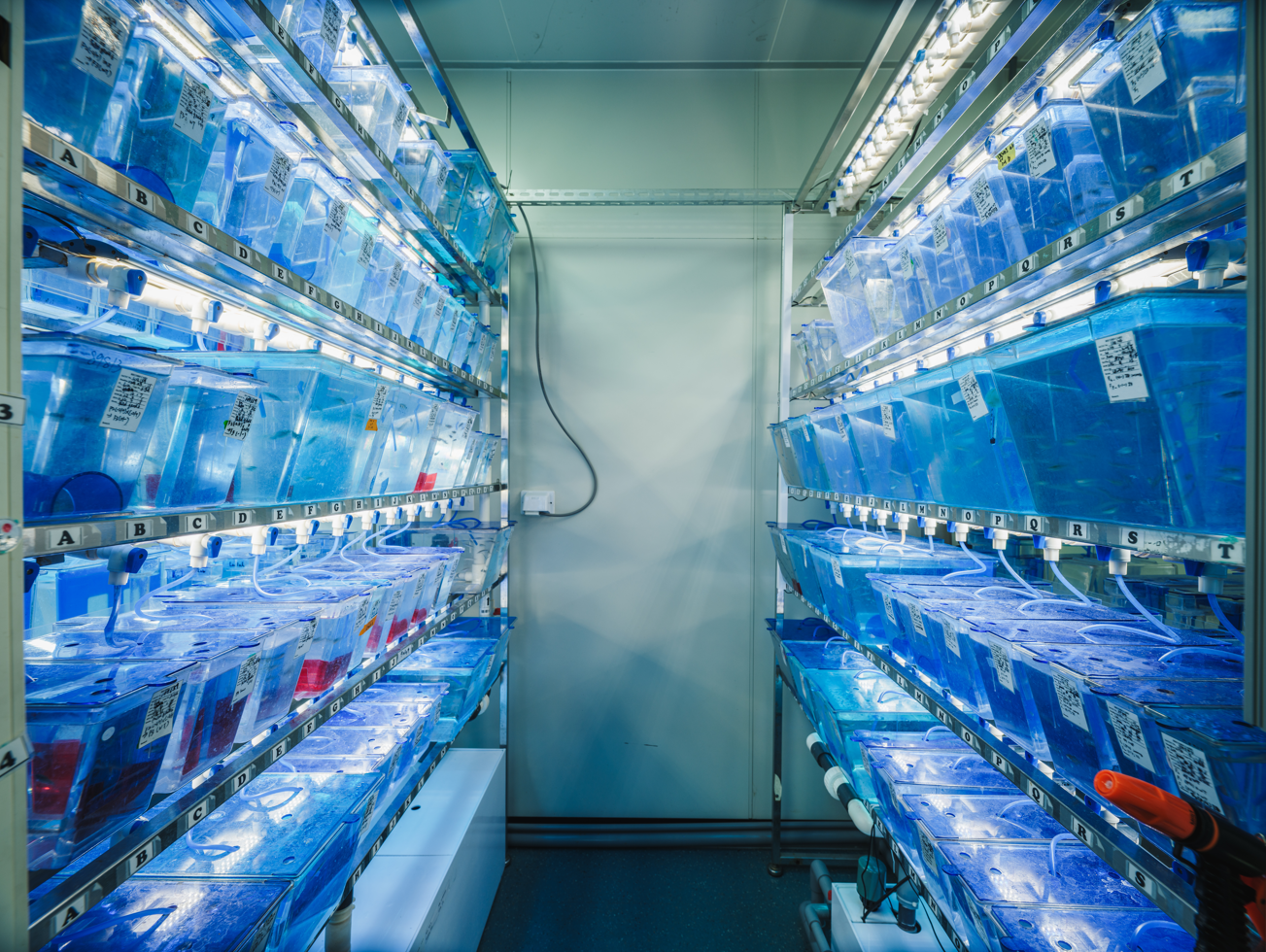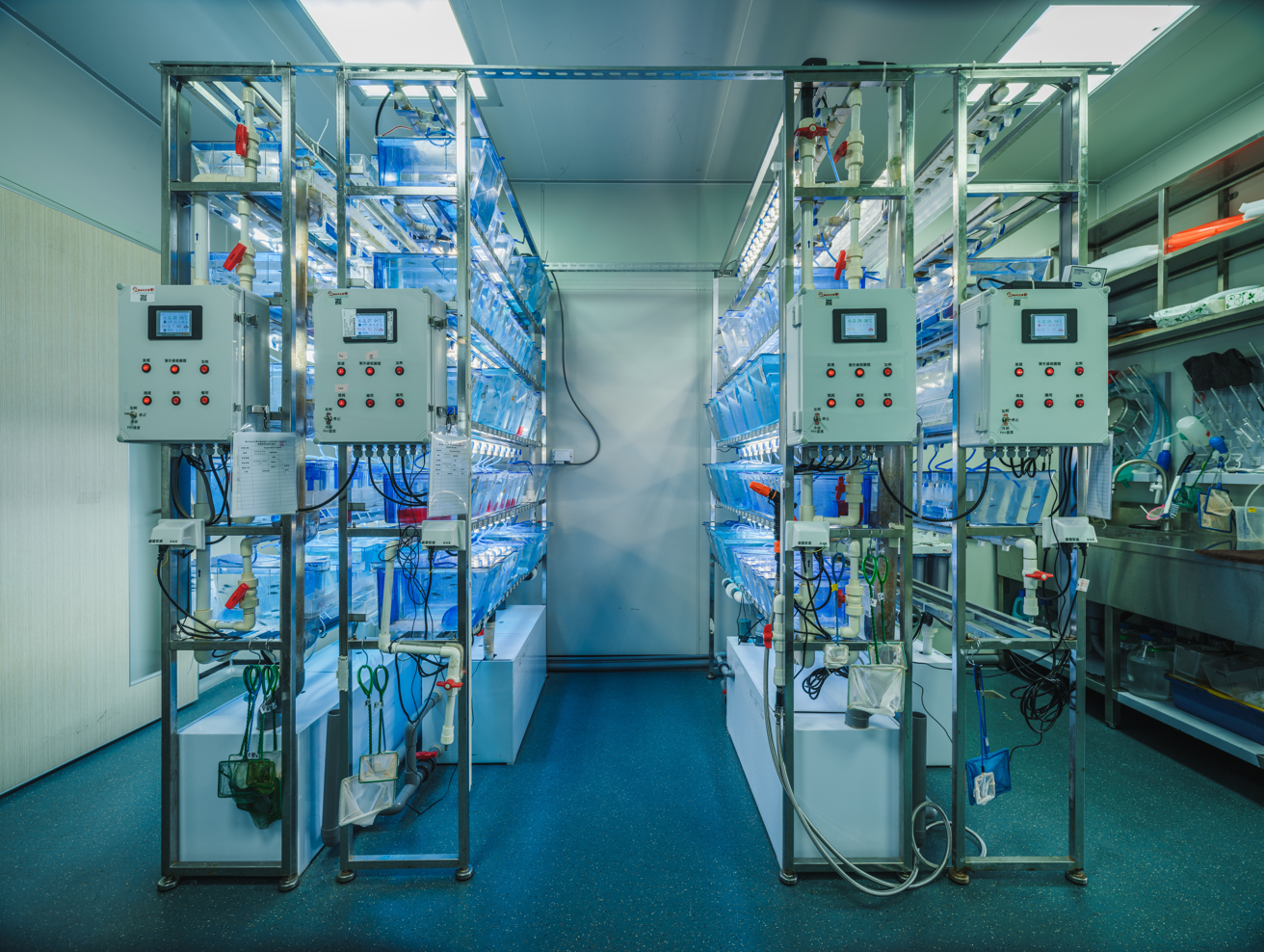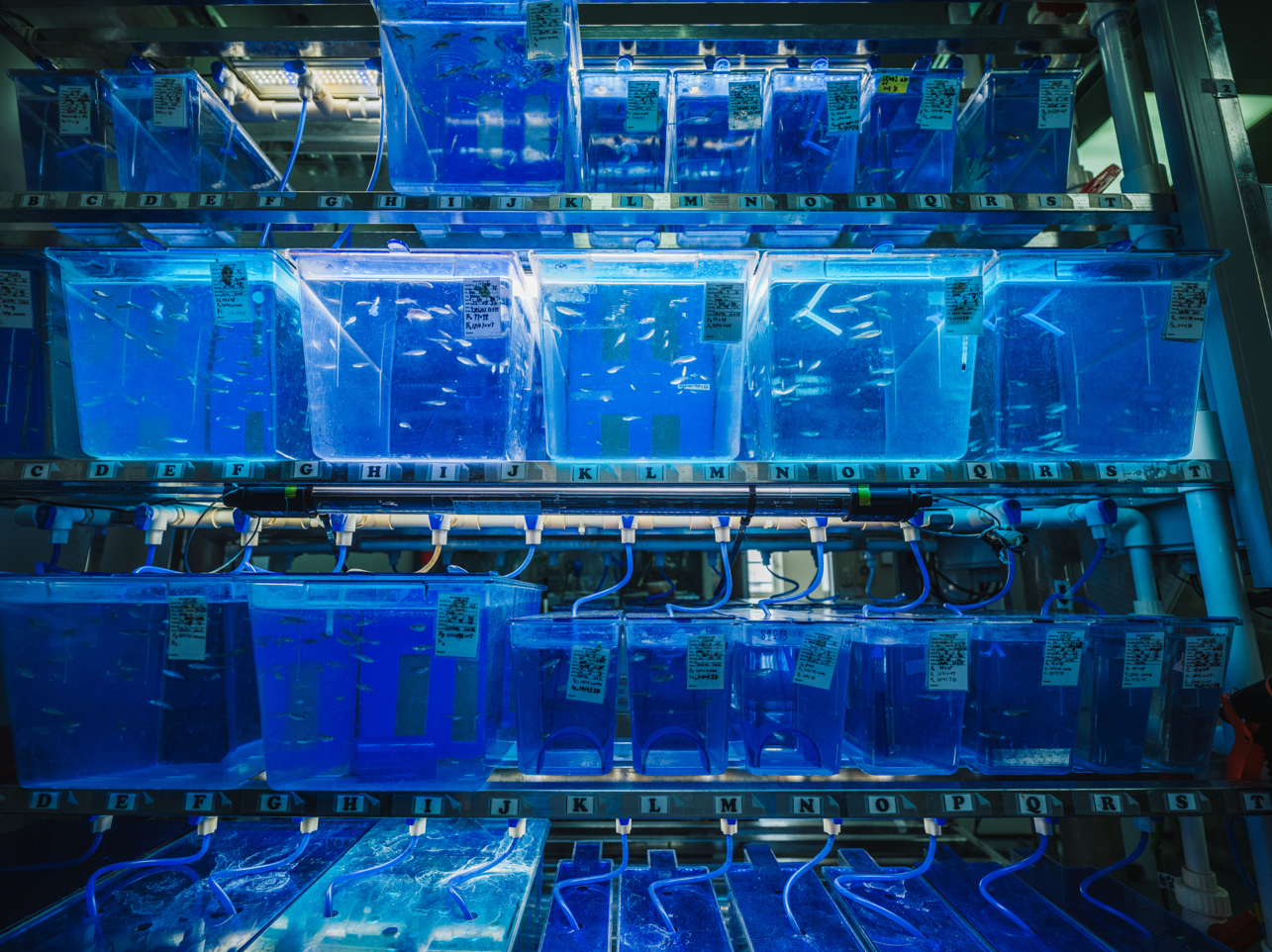Zebrafish Core Facility Platform
- Name of Platform: Zebrafish Core Facility Platform
Person in Charge: Fu-I Lu
- Introduction:
This space and operating platform for breeding Zebrafish compliant with international standards provides the required venue where the Zebrafish may be bred and raised for research, educational, and industrial purpose, where fundamental experiments may take place, and where instruments and technologies may be investigated at the supporting and molecular levels on campus and even off campus.
- Scope of Service:
There are primarily two objectives and they are described in detail as follows:
- To build a public core facilities and resources center for medium-sized Zebrafish that is compliant with international regulations and to provide service and technical support.
The Center will refer to domestic and international properly established Zebrafish core facilities that are mature and operative, including the Zebrafish International Resource Center (ZIRC), University of Oregon and the Zebrafish core facilities in Taiwan while planning and establishing this core facilities platform. There will be thermostatic breeding spaces where light exposure is controlled in the Center; the breeding area, experimental area, and sample observation area will be independent and separate from one another. Currently, four sets of Zebrafish breeding systems and 2 anatomy microscopes are planned and configured. Meanwhile, to meet the needs of special transgenic fish for a unique breeding environment, such as the fish whose transgene expression is to be induced through heat shock, some of the incubators are equipped with the water temperature-regulating pump and light exposure modulation so that various types of special experiments can take place. To ensure the quality of the breeding environment and equipment for Zebrafish, besides periodic inspections by the Council of Agriculture, international certifications will be planned so that the public Zebrafish core facilities are compliant with international regulations.
To accommodate use by the College of Medicine, the Zebrafish core facilities offer the following services and technical support, too:
-
-
- Instruments and equipment as well as venues required for related basic research or unique breeding environments are provided. Breeding, embryo collection, micro-injection, fish observation and recording, unique incubation temperature, and light control, among others, are included.
- Healthy wild breeds are supplied on campus to facilitate experiments or breeding to generate embryos; it saves the research resources required for subculture.
- Educational training courses are provided on basic skills. The required basic technical training courses are provided for individuals or groups periodically or from time to time, such as the breeding of Zebrafish, equipment maintenance, breeding, embryo collection, micro-injection, single-color and dual-color live staining, embryo freezing and cutting, biopsy and staining, among others. Once the Behavioral Analysis Platform is set up, the operational and user training courses on related instruments and equipment will be held periodically or from time to time.
- Assistance is provided in organizing related seminars and meetings and it will serve as the platform for exchanging technologies, resources, and experiment results.
-
Support is provided to researchers of Zebrafish in the surroundings of the National Cheng Kung University finding it difficult to obtain Zebrafish facilities compliant with international regulations. The Center will help relocate the Zebrafish breeding system and related equipment in their laboratory to this Resources Integration Center to hopefully help them address the issue of insufficient research space and reduce additional cost spent on maintenance of equipment and precisely fulfill the purpose of integrating and sharing resources.
- Customize suitable experiment procedures and test parameters
Besides maintaining the resources and platform and the sound operation of the Center as well as supporting researchers in fundamental research of normal tissues, organs, and physiological behavior, proactively developing a suitable behavioral response disease model is also one of the goals the Center will work for.
- Neurological development deficiency or degeneration-related disease model
Neurological development deficiency or degeneration-related diseases often result in obvious behavioral changes. As such, congenital neurological development disorders and aged-related degeneration-resultant abnormal behavior and movement will be one of the priorities of the services provided at the Center and its research and development. So far, Professor Tzu-Fun Fu at the Department of Medical Technology has developed several relatively mature human disease models that can be applied immediately and is relevant to neurological behavior, including Neural Tube Defect (NTD) in newborns that are triggered by nutrition deficiency, Alzheimer’s Disease (AD)(12), and epilepsy triggered by three different drugs (ginkgotoxine, pentylenetetrazol, and caffeine) (11, 26, 27). Once the behavioral model analysis platform is set up, related service will be provided.
- Cancer-related Disease Model
The technology to apply Zebrafish embryos to cancer metastasis and proliferation of cancer in-situ is quite mature. Related experiments are being conducted in laboratories of the National Cheng Kung University, too. As an operation room is available as part of the Zebra core facilities of the Center, too, related spaces may be provided for conducting experiments.
- Others
Besides the diseases provided above as examples, the Center may also discuss with researchers and help them develop suitable experiment procedures and test parameters reflective of their unique demand for experiment design.








